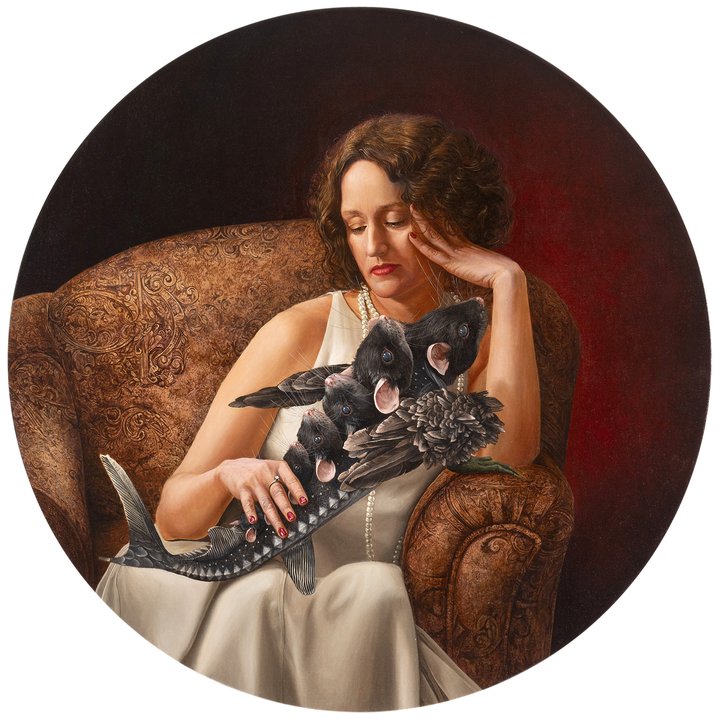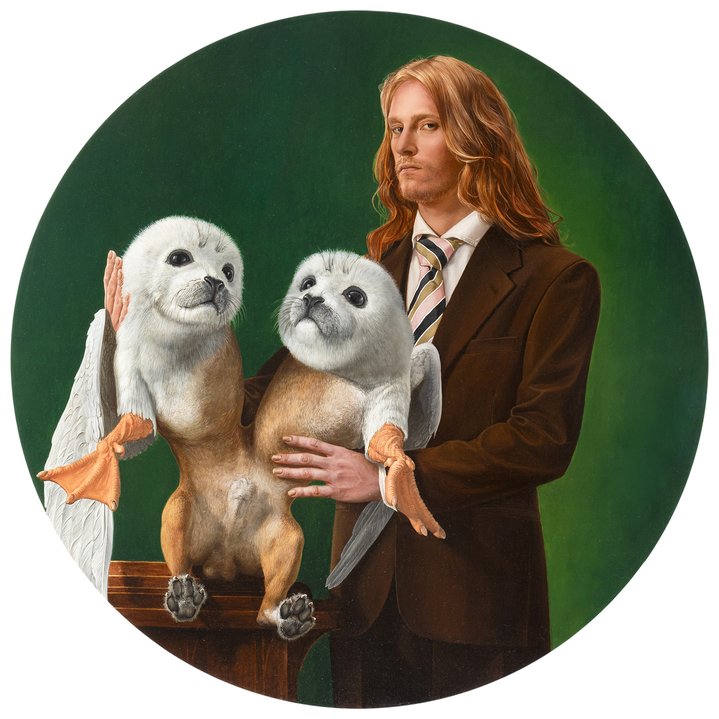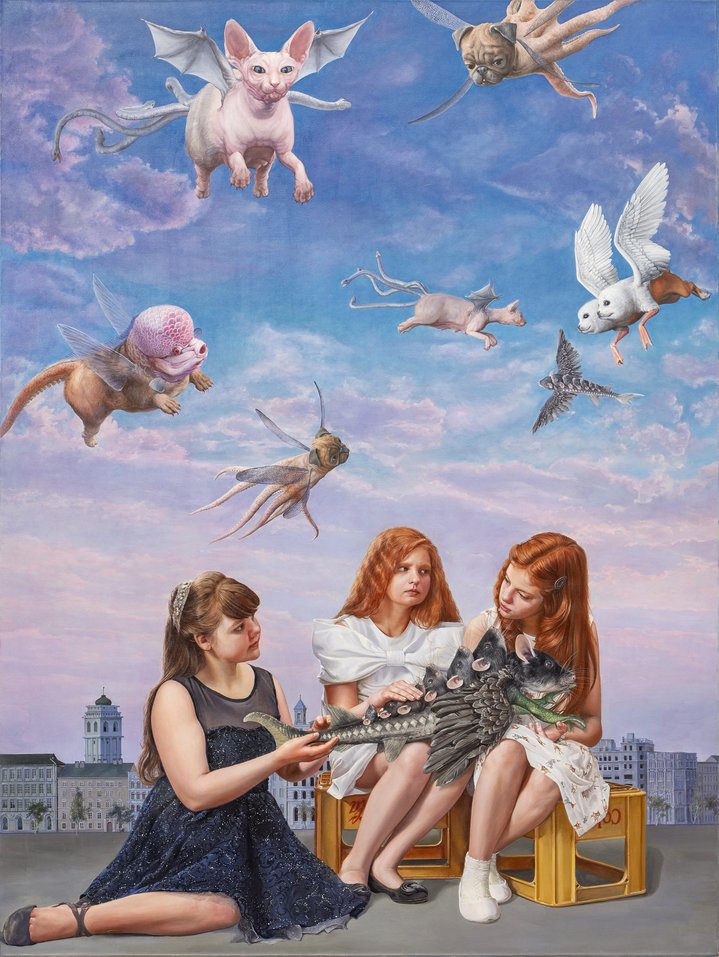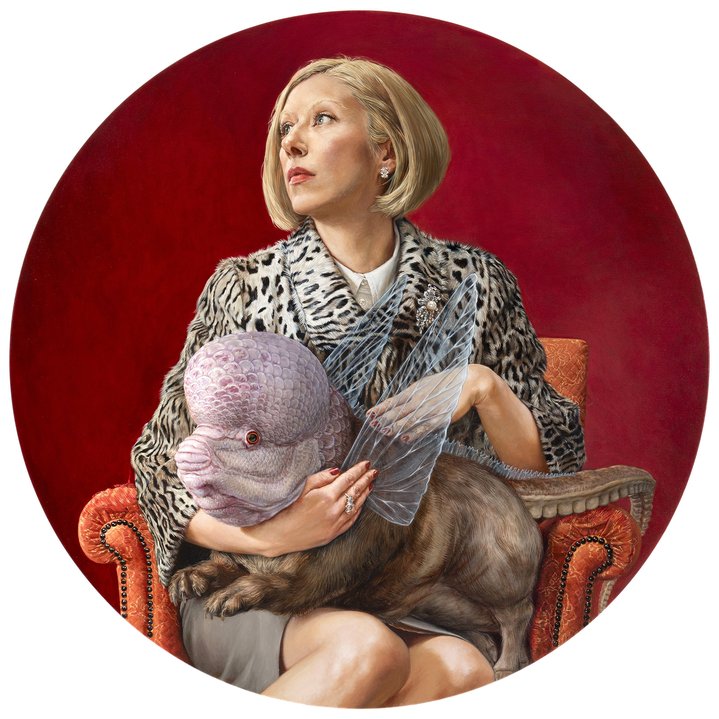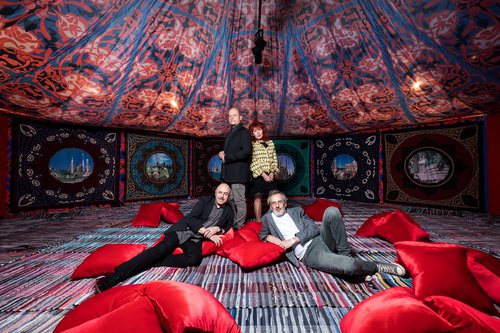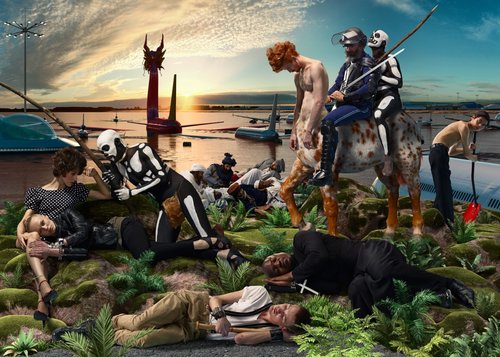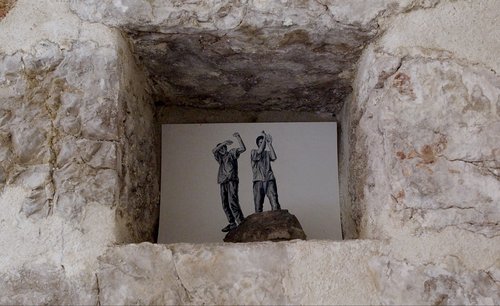AES+F’s Haunting Vision at their Latest Exhibition in New York

AES+F. Inverso Mundus, ‘Two Women with Pugtopuses’, 2022. Courtesy of Sargent’s Daughters Gallery
‘Inverso Mundus: Chimeras’, an exhibition of new paintings by collective AES+F, is currently on view in New York gallery, Sargent’s Daughters.
‘Inverso Mundus: Chimeras’ features a series of paintings by this renowned Russian collective relating to their 2015 large-scale project of multichannel video installations, digital collages, paintings, sculptures, objects, drawings and a performance initially shown at the 56th Biennale di Venezia. The title of the 2015 performance in Venice, ‘Inverso Mundus’, is a mix of Old Italian and Latin, referring to 16th century allegorical engravings which depict the world upside down. In this historical genre, social conventions are inverted, hierarchies overturned, established precepts subverted to reveal the arbitrary nature of the order of things and interrogate the shifting ground on which it rests.
The subjects of five Renaissance-style tondos that form part of the show’s ‘Chimeras’ series are depicted caressing their grotesque pets in domestic settings. Produced in the style of the Old Masters, they are sumptuously dressed and covered in jewels reminiscent of Leonardo da Vinci’s ‘Lady with an Ermine’. There are three large paintings of neatly coiffed ladies in evening gowns posing with chimeric companions set against urban architecture and thoughtful young girls in pretty dresses on overturned Coca-Cola plastic crates as a squadron of winged chimeras descends upon them from above. The largest painting in the exhibition titled ‘The City of Chimeras’ is an apotheotic grand finale of the show. It has no trace of human presence. Instead, multifarious fantastical creatures such as Catpigs, Pugtopuses, Brainfishes, and Sealdogs – per AES+F’s private bestiary – swirl around in a chaotic flight against a floating white city in the sky which echoes Gaudi’s Sagrada Familia. These oil paintings all relate to ‘Inverso Mundus’, a 39’40” long video installation (to be screened in the East Village Angelika Film Center later in May).
All the sitters in the paintings also took part in the related videos, slow-moving tableaux-vivants, open-ended stories that also have no beginning. These ten narratives centre around notions of the rich versus the poor, old men beaten by children in a kickboxing match, women sensually torturing men, police engaged in foreplay with protesters in a palatial setting. The video enacts the meeting of a global corporation’s board of directors during a peaceful takeover by impoverished doppelgangers. There are strikingly beautiful women in evening dresses inflicting pain on men, manacled inside designer cages and other state of the art torture devices. The poor give alms to the rich and a pig guts a hapless butcher hanging upside down. And to cap off these carnivalesque reversals, policemen and women cozy up to a rebellious youth in apparent anticipation of an orgy on an enormous, canopied bed that slowly rotates above the clouds while chimeras fly around it.
These little domesticated monsters, a phantasmic leitmotif in ‘Inverso Mundus’ are not as benign as they initially appear to be. They have a fiendish flip side, a dual nature, which can come out when least expected. It is about efforts to placate or dominate the ‘Other’, a stranger in your home or on a larger scale, contemporary, imperialist states trying to impose their own set of values on other nations, often with devasting results. Are the human protagonists in these paintings dreaming up their own chimeras, or vice versa? By treasuring a terrible pet, does that make you more or less of a human? Does the sleep of collective reason produce monsters amongst us or even within us? Are we perhaps turning into our own nightmarish chimeras?
Tzvetan Todorov, a French and Bulgarian literary theorist and culture critic examines this uncertainty in his study ‘The Fantastic’, in which he writes: “The fantastic is defined as a moment of hesitation between belief and disbelief of the supernatural. Once we choose one answer or the other, we leave the fantastic for a neighboring genre, the uncanny or the marvelous. The fantastic is that hesitation experienced by a person who knows only the laws of nature, confronting an apparently supernatural event. Evgeny Svyatsky describes the group’s artistic practice as a form of social psychoanalysis. Once confronted with the grotesqueries and ambiguities of chimeras, the viewer might re-examine their own preconceived ideas with regard to beauty, normalcy, and domesticity and to take a closer look at our ‘posthuman’ world.
The multidisciplinary collective AES was formed in 1987 (the acronym takes the first letters of the surnames of founder members Tatiana Arzamasova, Lev Evzovich, and Evgeny Svyatsky), later becoming AES+F in 1995 when photographer Vladimir Fridkes joined them. Over the past three decades they have made photography, videos, sculptures, and paintings. Their trademark is large-scale narratives that explore our contemporary global landscape and its culture, both its vices and virtues. On the current show, Evzovich and Svyatsky chime in unison: “In a sense, the exhibition is the portrait of humankind during this time of total transformation, transhumanism, and artificial intelligence,”. In our contemporary world where poor AI-generated images are becoming commonplace in artistic production and an assortment of neural networks crank out massive quantities of empty and shoddy ephemera creating a blind leading the lame scenario AES+F’s finely crafted digital work and dazzling oil paintings thankfully reflect on our world, turned upside down.
AES+F | Inverso Mundus: Chimeras
179 East Broadway
New York, NY 10002
April 25 – June 1, 2024
AES+F’s ‘Inverso Mundus’
Video screening and panel discussion
Angelika Film Center & Cafe – East Village
181-189 2nd Ave, New York, NY 10003
May 15, 2024







